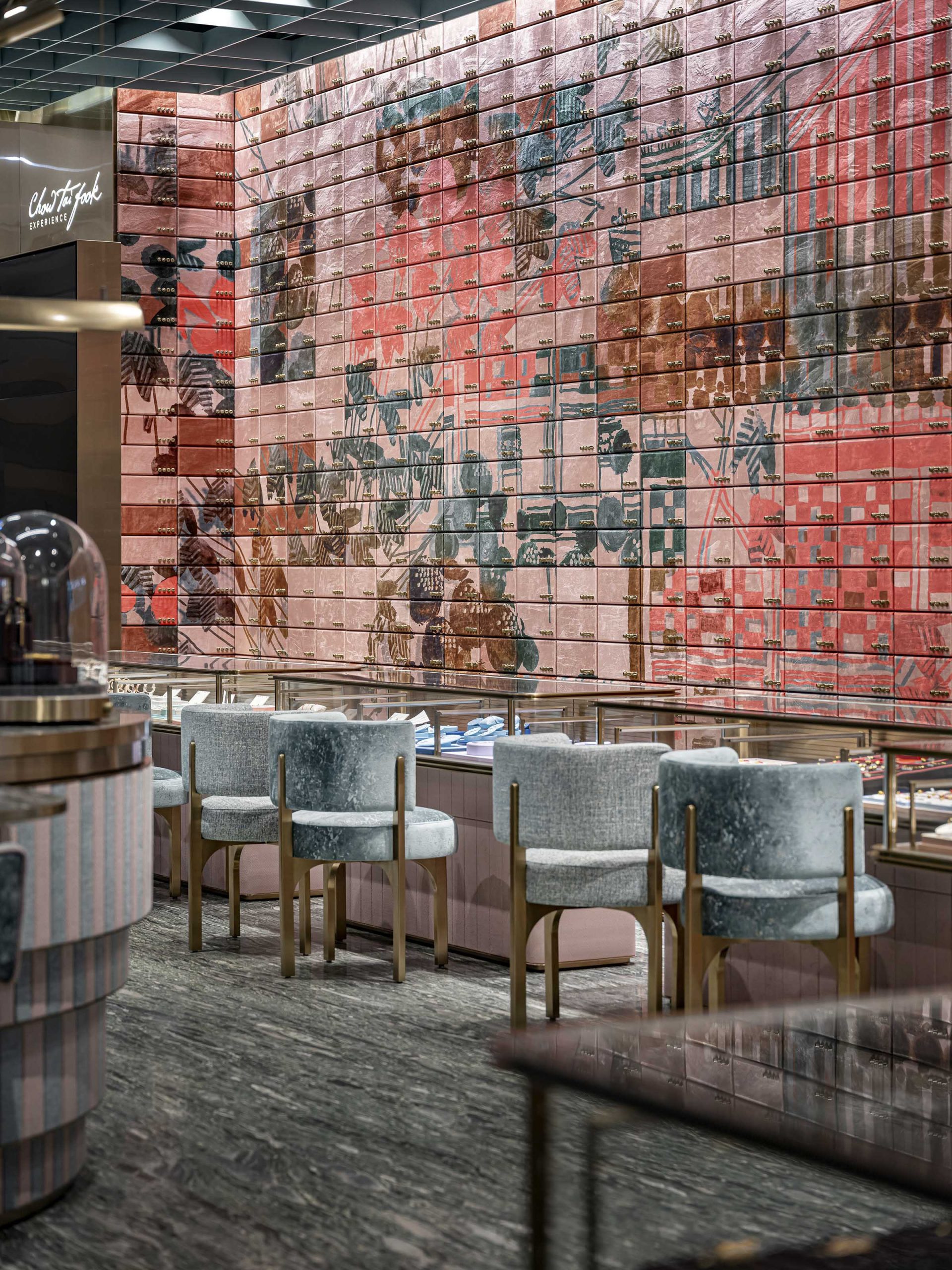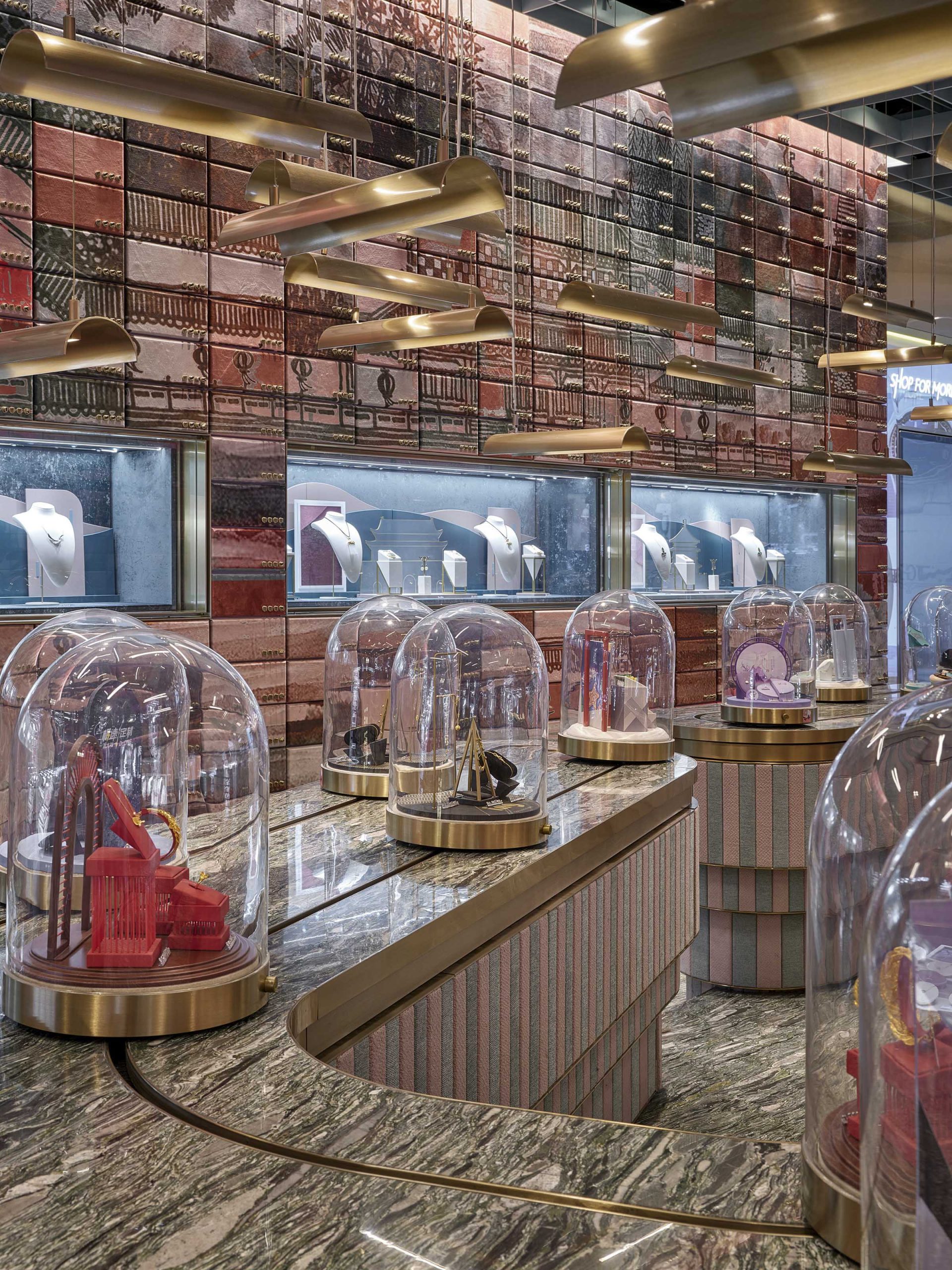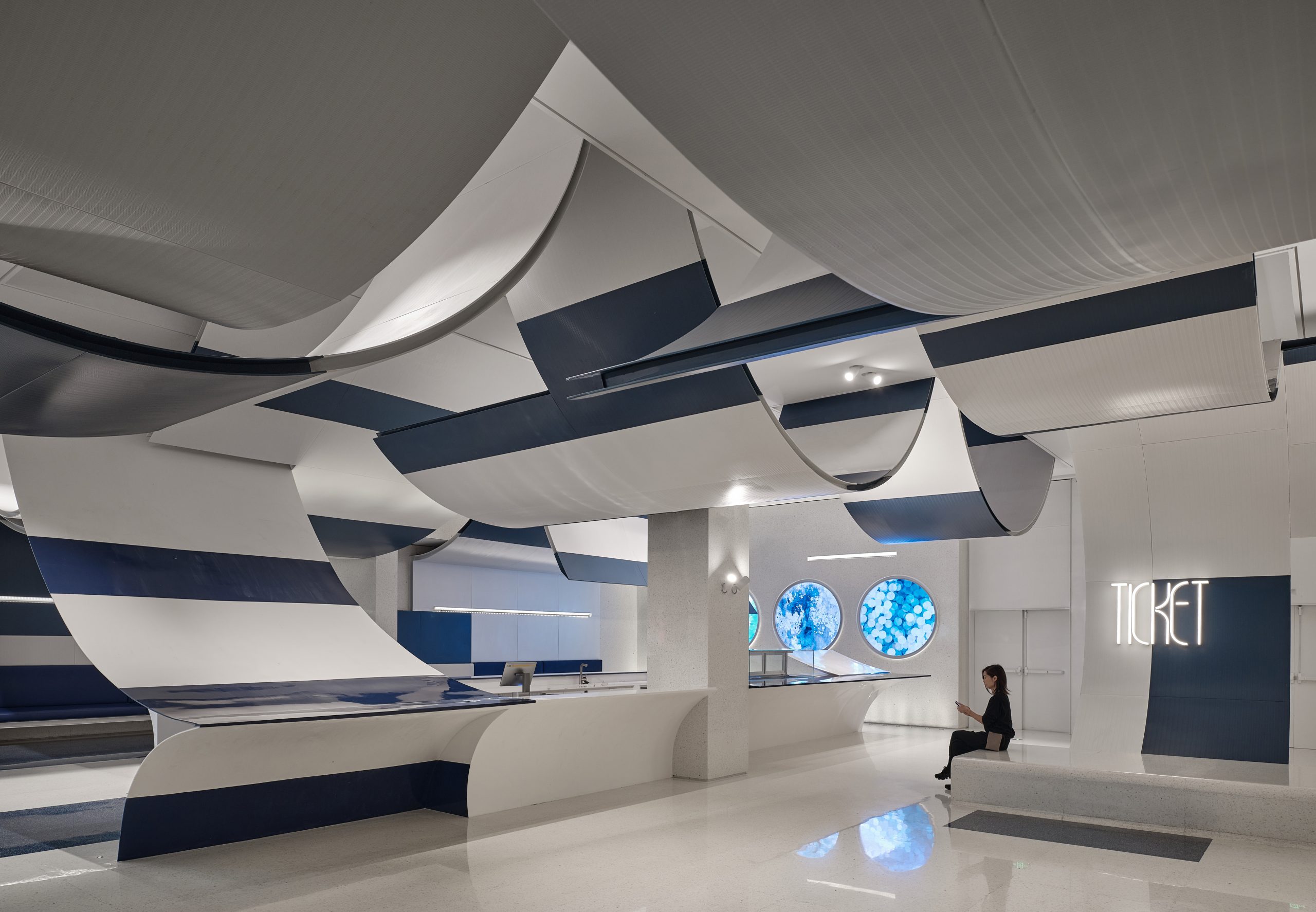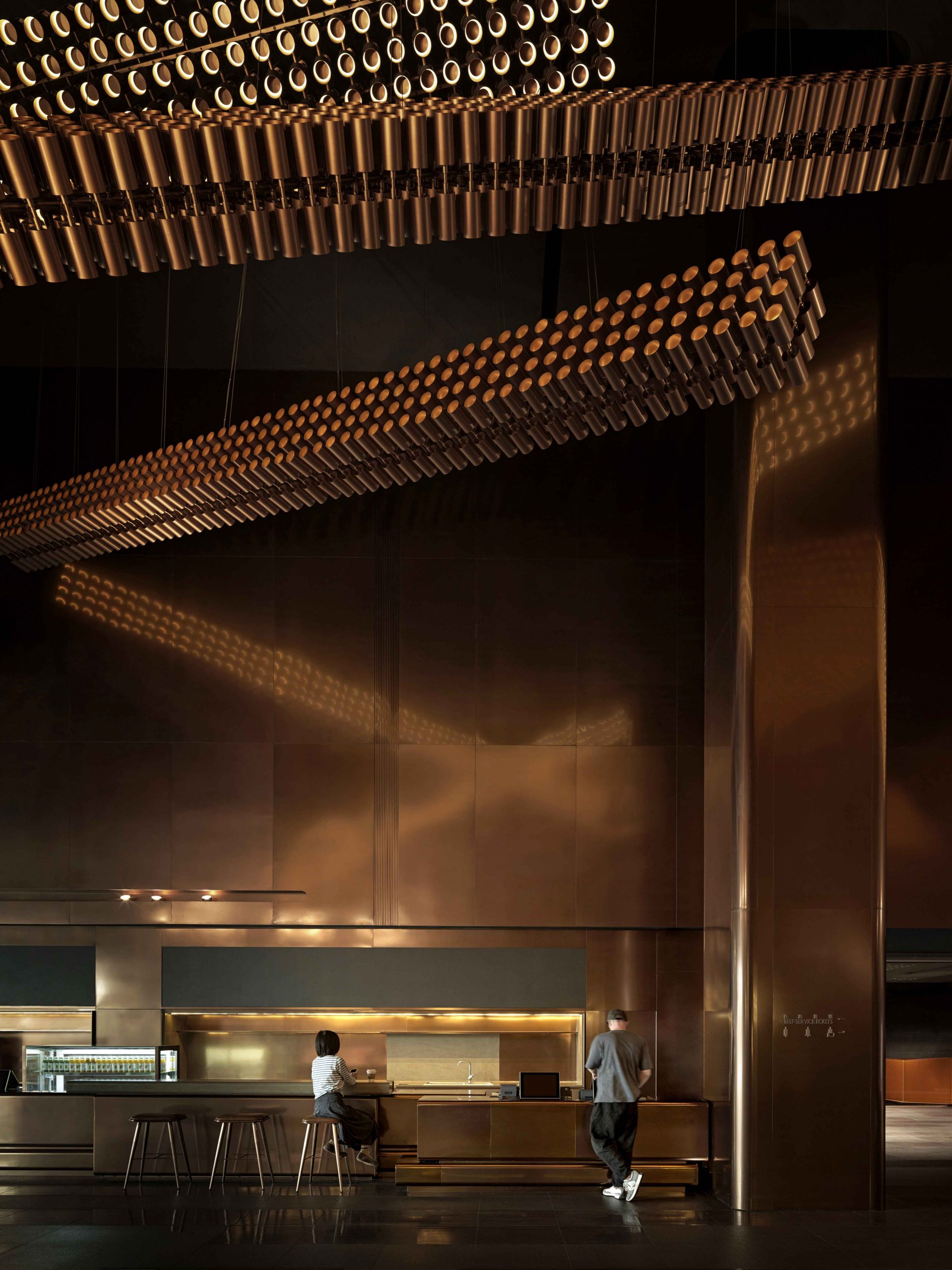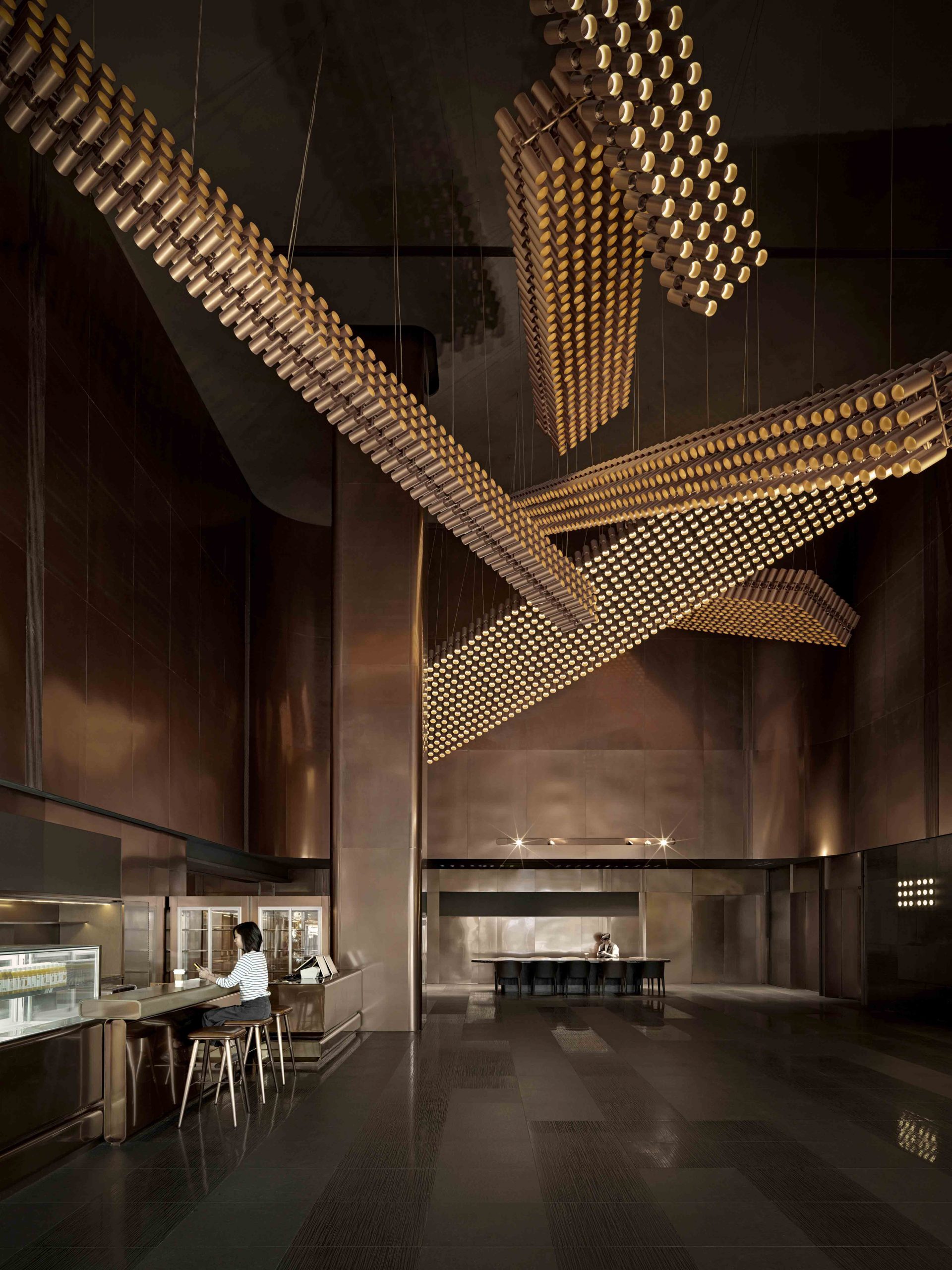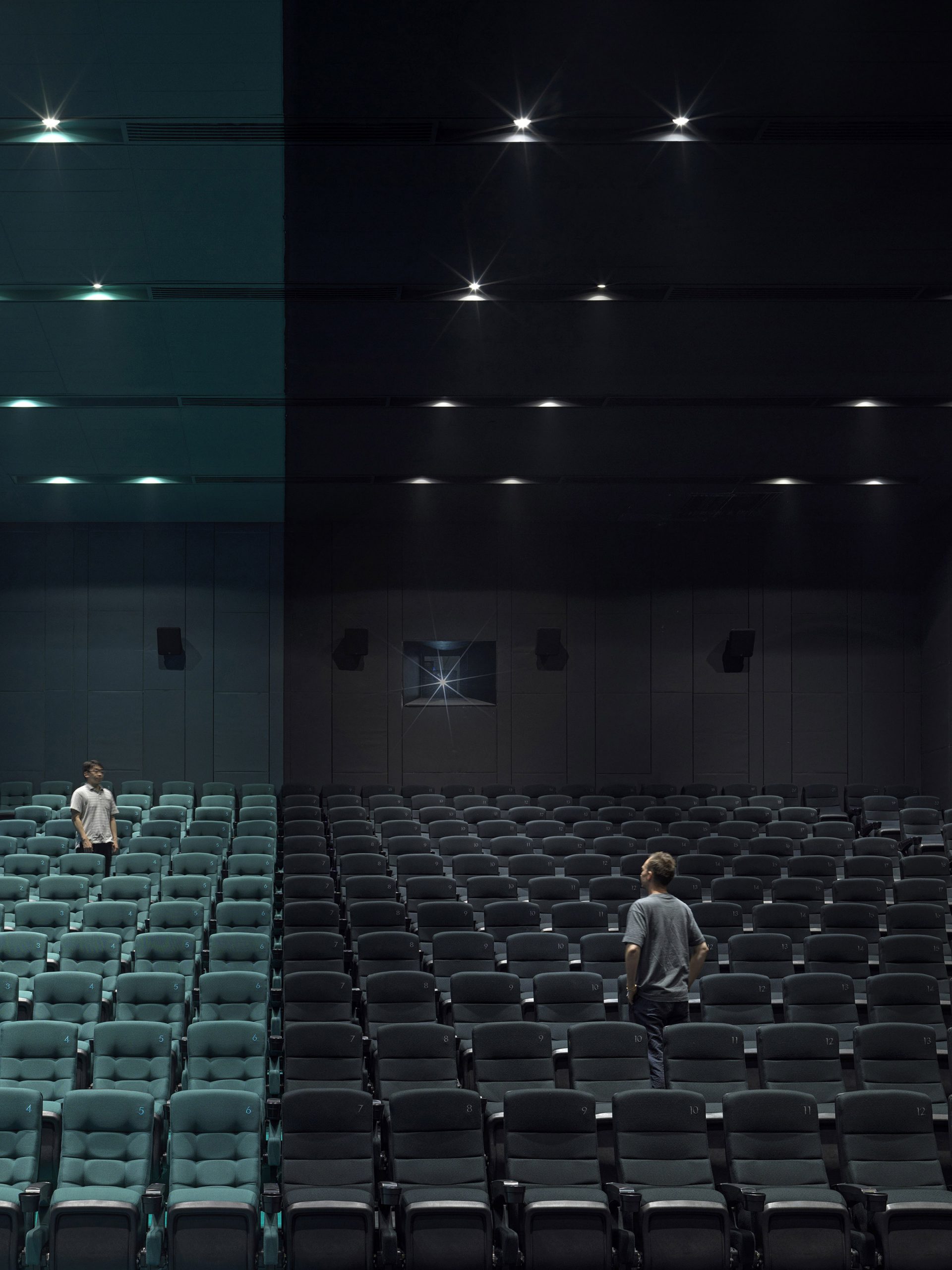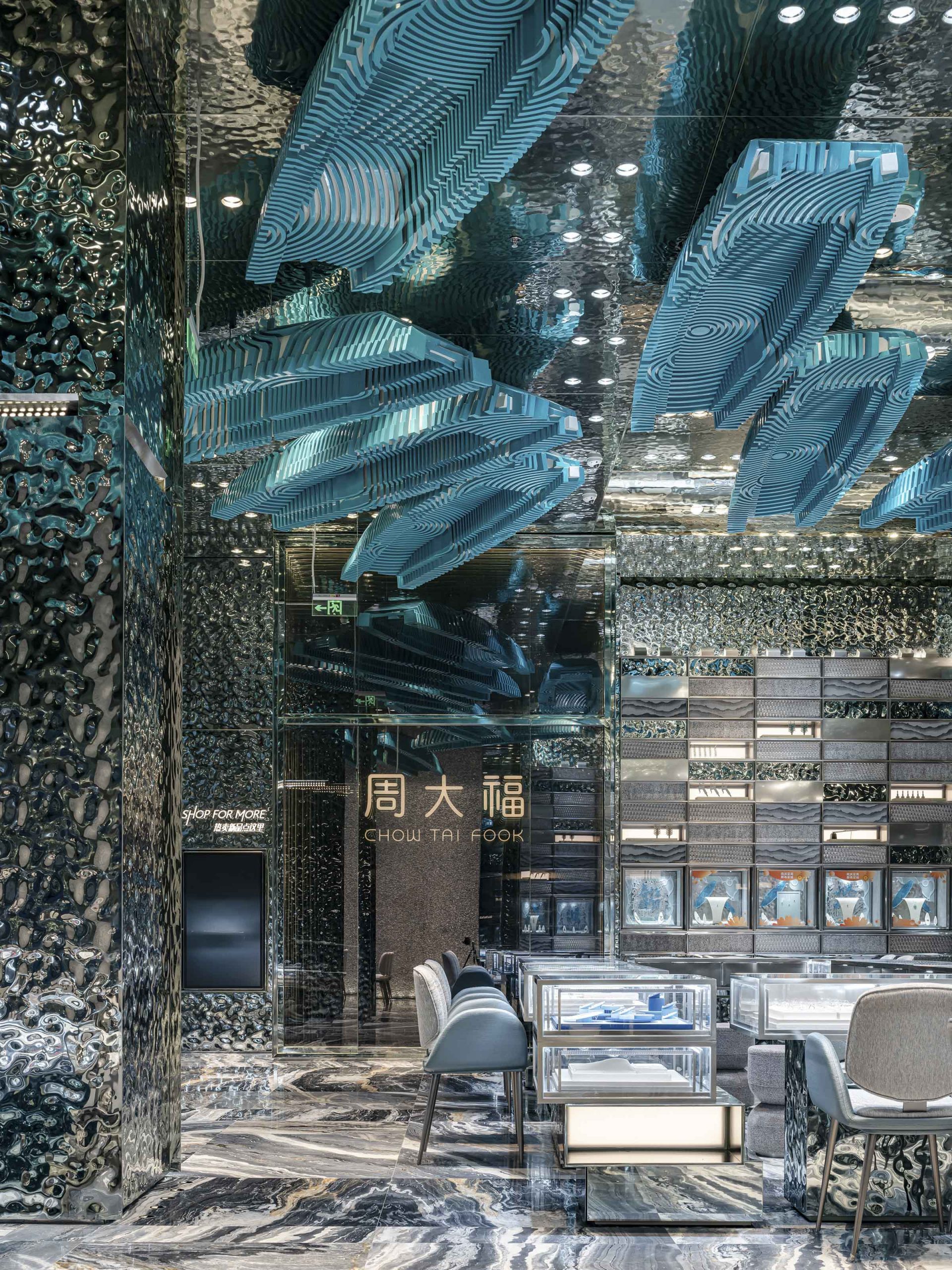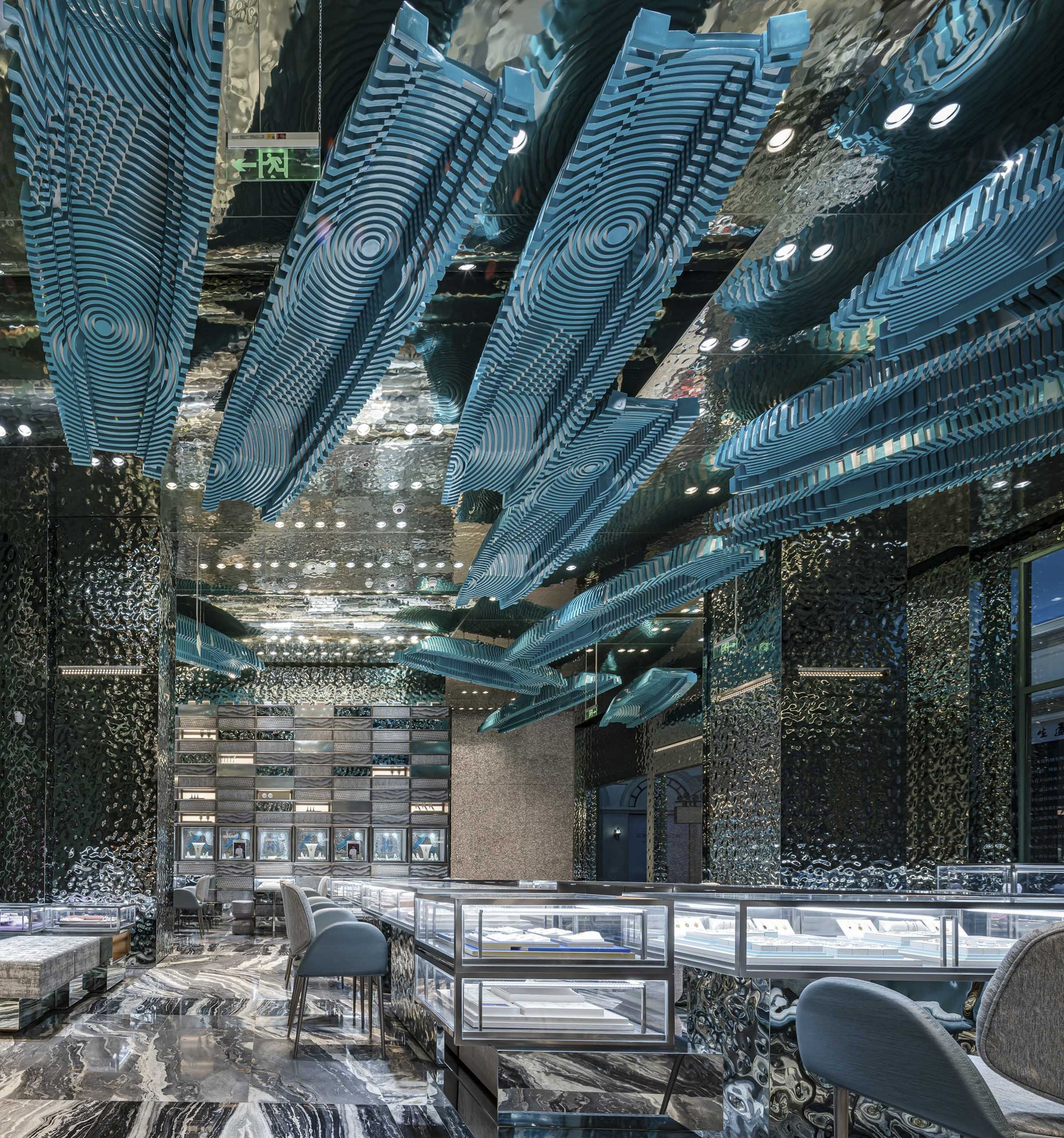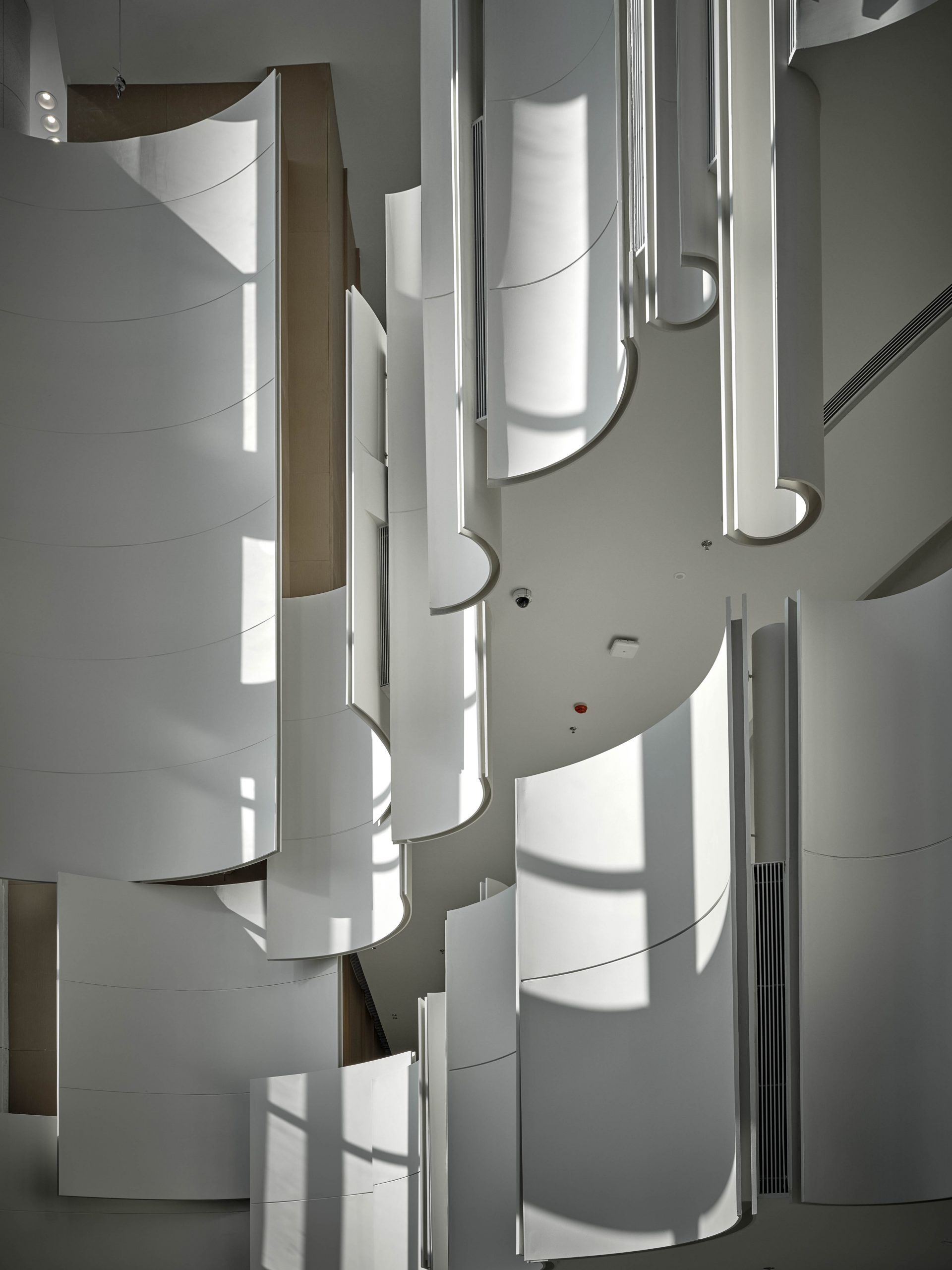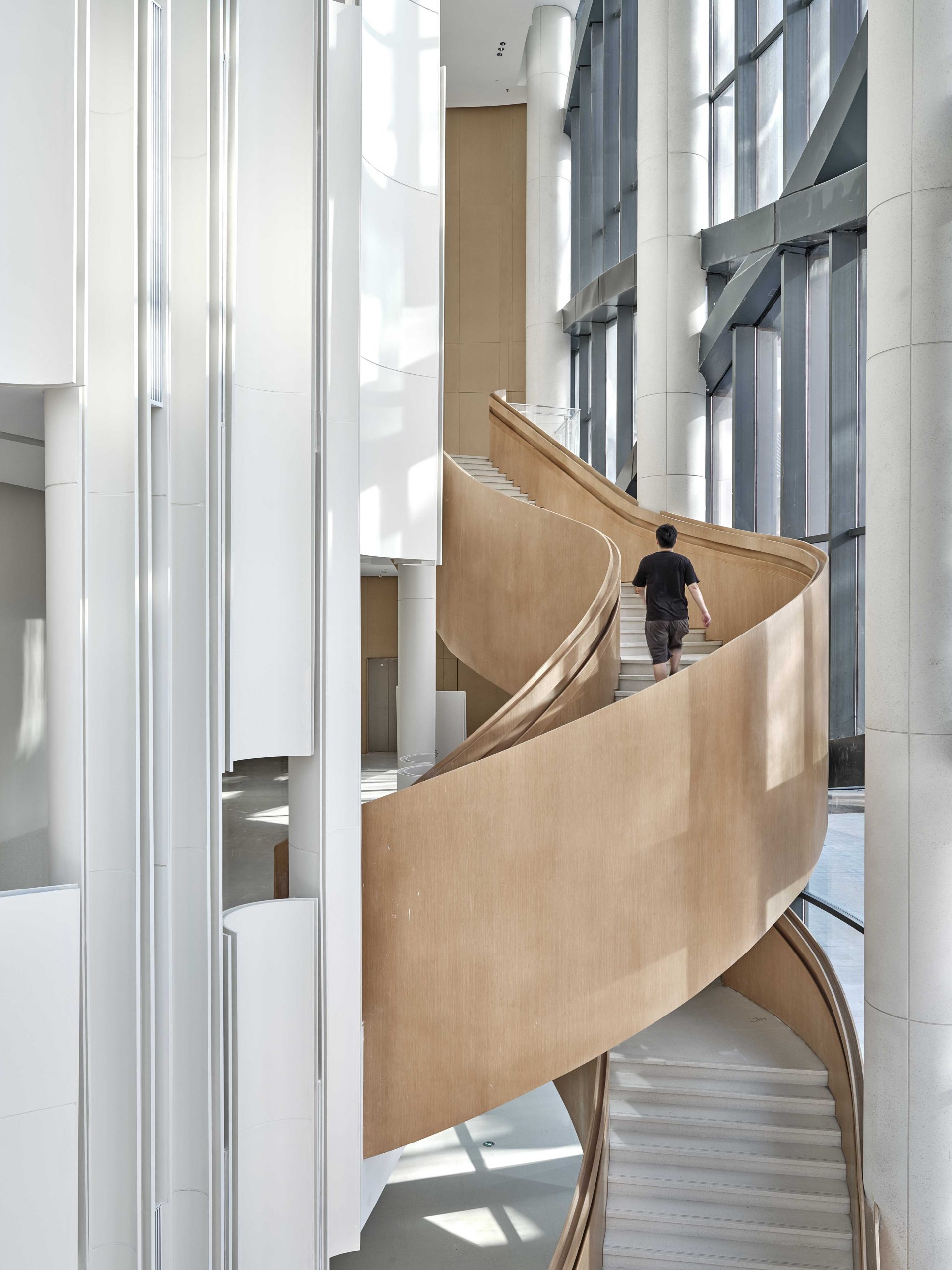Ajax Law and Virginia Lung are co-founders of One Plus Partnership, a Hong Kong-based, multiple award-winning interior design firm. Since its inception in 2004, One Plus has received more than 800 international interior design awards and exhibited in renowned exhibitions around the world. Extraordinaire visionaries, they are reputed for creating bold and dramatic spaces that are out of the ordinary to intrigue one’s senses. Asia Designers Directory caught up with this duo to learn about their extraordinary work.
Your designs are striking, bold and impressionable. How would you describe your design philosophy and what are your considerations for each project?
We are good at spatial design driven by thematic concepts, and we make a breakthrough and innovate each time during our design creation. We usually find a theme that fits with the project, then refine the expression of this theme, and finally make the visual experience appealing through artistic techniques.
- CTF Wucai City Shop, Beijing, China (Photo credit: Jonathan Leijonhufvud)
- CTF Wucai City Shop, Beijing, China (Photo credit: Jiangnan Photography)
- CTF Wucai City Shop, Beijing, China ((Photo credit: Jiangnan Photography)
Designing cinemas is one of your strengths. Can you tell us what inspires the designs of cinemas and what is the design process of making each cinema unique and statement-making?
For the conception of a space, our designs tend to be more artistic. Regardless of the size of the space, we usually first decide on a design theme, then do some research to see what elements can be integrated with this theme. We also pay attention to the development of material techniques and the use of colours, which makes our spaces more unique and visually appealing.
When designing Shenzhen CineSky Cinema Phase 3, we got inspired by the name of the cinema, using the blue sky and white clouds to represent the Chinese word “new sky”. We abstracted the floating white clouds into the form of “arcs”. In order to make people imagine the lightness of being in the clouds, visual artistic expression has been applied to the design. In addition, these arcs are also functional as they can be seats, bar, LED screens, etc. The material of the curved surface of the ceiling is aluminium alloy, giving a light visual impression; in contrast to the lightness of the ceiling, the material of the curved counter on the ground is mainly stone, giving a safe and stable experience of use.
- Shenzhen CineSky Cinema Phase 3 (Photo credit: Jonathan Leijonhufvud)
- Shenzhen CineSky Cinema Phase 3 (Photo credit: Jonathan Leijonhufvud)
Another example is Wan Fat Jinyi Cinema, where a real live stage for people to perform is installed. When cinema had not been invented, the stage was always the space for creators and actors to perform and express themselves, so the stage became the focus of the audience. After the birth of cinema, the silver screen also became the audience’s focus. We used this combination to refine the design concept and use stage light as the design theme for this project. Luminaires with “spotlight” characteristics can be seen in the lobby and the entrance corridor of the cinema. Red copper coloured metal material has been used to enhance the lighting effect of the whole interior space, whose light diffuse reflection effect can satisfy the lighting needs of daily operation.
- Wan Fat Jinyi Cinema, Shenzhen, China (Photo credit: Jonathan Leijonhufvud)
- Wan Fat Jinyi Cinema, Shenzhen, China (Photo credit: Jonathan Leijonhufvud)
- Wan Fat Jinyi Cinema, Shenzhen, China (Photo credit: Jonathan Leijonhufvud)
As for the project Changjiang Insun Cinema at Xian La Botanica CapitaLand Mall, it is filled with memories of our trip to Okinawa, Japan. We saw a lot of outdoor children’s play facilities in Okinawa such as slides, swivel chairs, which are not only popular with kids, but also grown-ups. Besides, we realised that the mall where the cinema is located is popular with families with kids, so we figured why not bring play facilities into the cinema.
The theme of this project is “negative film”, where the relationship between light and dark is the opposite of the photographed subject, and the colors are complementary to the real colors. In different spaces of the entire cinema, we used very eye-catching contrasting colour combinations, such as red and white, black and white, blue and red, black and red, etc. Clear special segmentation makes the space interesting and vivid, which creates a unique viewing atmosphere.
- Changjiang Insun Cinema, Xi’an China (Photo credit: Jonathan Leijonhufvud)
- Changjiang Insun Cinema, Xi’an China (Photo credit: Jonathan Leijonhufvud)
- Changjiang Insun Cinema, Xi’an China (Photo credit: Jonathan Leijonhufvud)
Which projects are most representative of One Plus?
Our design does not have a definite style, and we think that this indefinite style is our style. Therefore, it should be said that every project of One Plus Partnership can be considered our most representative work. We not only design for cinemas, but also other interior scenarios, such as restaurants, retail stores, clubs, sales centres and commercial offices.
For the design of Chow Tai Fook jewellery experience shops, we have set two main design themes: one is “Heritage”, people usually put their precious items in safe deposit boxes, not only because they are valuable, but also because they want to pass them on from generation to generation, and this is one of the important values of jewellery as well; the other concept is “Gift”, jewellery is often put in gift boxes and sent to the beloved ones, meanwhile, it can commemorate some special days. In addition to this, we integrate cultural elements of the city and region where each shop is located on the basis of these two main themes, making each project unique and distinctive.
In the project Beijing CTF Wucai City Shop, we embodied the concept of “heritage” in the form of a safe deposit box and conveyor belt, in the meantime integrated the Beihai Garden and the Imperial Garden of the Forbidden City in a new way to represent the rich historical legacy of Beijing city. We also applied modern painting techniques to outline and refined their respective characteristics, printed the painting of these two gardens on fabric, divided it into countless smaller parts as the doors of the safe deposit boxes, and organically arranged the patterns and colors together on the walls of the shop to make the design interesting and unconventional.
In the project Suzhou CTF Gate of the Orient Shop, we added the element of “water town” to the theme “gift” by making different patterns of waves for the surface of each gift box, as if these gift boxes with jewels inside were floating in the water. We brought Suzhou’s river to the ceiling, and put many little green boats on it, which were shaped with the pattern of water ripples after water dropped into the river surface. The section of the ceiling mimics the shape of a rippling river presented in concave and convex silver colour material. The mirror surface treatment is to further restore the visual experience of the shimmering water town.
- CTF Gate of the Orient Shop, Suzhou, China (Photo credit: Jiangnan Photography)
- CTF Gate of the Orient Shop, Suzhou, China (Photo credit: Jiangnan Photography)
- CTF Gate of the Orient Shop, Suzhou, China (Photo credit: Jiangnan Photography)
- CTF Gate of the Orient Shop, Suzhou, China (Photo credit: Jiangnan Photography)
Luoyang city has long been famous for its beautiful peonies, so we chose peony as the theme to design Luoyang Zhengda Opera House. Arc-shaped elements throughout the interior are actually an abstract way of resembling the petals of the peony in full bloom – these combined with the organ pipes in various heights create the elongated organic decorative shapes throughout the space. Matt white is the main colour for this project to denote class, timelessness and elegance. We chose this colour because the glass curtain walls on the front of the theatre can transmit natural light very well.
- Luoyang Zhengda Opera House (Photo credit: Jonathan Leijonhufvud)
- Luoyang Zhengda Opera House (Photo credit: Jonathan Leijonhufvud)
- Luoyang Zhengda Opera House (Photo credit: Jonathan Leijonhufvud)
- Luoyang Zhengda Opera House (Photo credit: Jonathan Leijonhufvud)
It has been nearly two decades since One Plus was incepted. How do you think you have evolved as designers?
We have always been passionate about design since the very first day of founding One Plus Partnership. The initial intention that we would try our best to do well and make a breakthrough in every single project never changed. This is also our goal in the area of spatial design. In the past 18 years, we have been awarded 800 international awards in total. This is affirmation from the industry, and more importantly, it encourages us to continue improving ourselves. Besides, we are also willing to take on new challenges and venture into other areas of design. Another brand of ours, Pulse On Partnership, continues to practice spatial design, and also does some experimental trials in other areas, such as clothing design.


